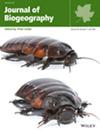Habitat Suitability of the Sand Lizard (Lacerta agilis) at Its Distribution Limit—An Analysis Based on Citizen Science Data and Machine Learning
Abstract
Aim
To inform evidence-based conversation strategies this study aims to assess habitat suitability and connectivity for the Sand Lizard (Lacerta agilis) at its northwestern distribution limit by integrating remote sensing data, machine learning techniques, and citizen science contributions. Comprehending the population dynamics of the Sand Lizard Lacerta agilis is imperative for ensuring the preservation of metapopulations of this matrix-sensitive species.
Location
NW-Germany, Netherlands.
Methods
We integrated citizen science data from observation.org with multispectral Sentinel-2 imagery and auxiliary spatial datasets, including soil types, vegetation indices, topographic features, and proximity to various habitat types. We trained Random Forests which were employed to predict habitat suitability across a region encompassing North Rhine-Westphalia and Lower Saxony in Germany, as well as the Netherlands, at a 10-m spatial resolution. Interpretable machine learning techniques were applied to identify key environmental drivers and corridor analysis was conducted to identify potential barriers to habitat colonisation.
Results
The ability of the model to predict habitat suitability was high (Area under the Curve = 0.935 + − 0.05). Thirty-three parameters were identified as relevant habitat determinants, where the most important group of variables were associated with topography, solar irradiation and soil types. Urban structures, however, further emerged as relevant habitat parameters influencing habitat suitability. Connectivity was mainly provided by linear structures such as railway lines and roadsides.
Main Conclusion
Understanding habitat suitability and connectivity is critical for the effective preservation of metapopulations and the development of robust conservation strategies. Our study demonstrates how integrating remote sensing data with citizen science contributions can effectively be applied for habitat modelling, particularly over large geographical areas. Contrary to previous assumptions that peripheral populations, such as those at the northwestern limit of the Sand Lizard's distribution, may be more specialised, our findings reveal that these lizards exhibit considerable adaptability to a range of environmental conditions, including human-altered landscapes. This adaptability challenges conventional views and underscores the importance of considering anthropogenic environments in conservation planning. By incorporating novel ecosystems and urban areas into species conservation plans, our study contributes to a more inclusive and effective framework for biodiversity conservation.


 求助内容:
求助内容: 应助结果提醒方式:
应助结果提醒方式:


